#diomedea exulans
Explore tagged Tumblr posts
Text

A wandering albatross (Diomedea exulans) chick sits in it's nest in South Georgia, Antarctica
by Laurence Green
#wandering albatross#juvenile#albatrosses#petrels#seabirds#birds#diomedea exulans#diomedea#Diomedeidae#procellariiformes#aves#chordata#wildlife: south georgia#wildlife: antarctica
282 notes
·
View notes
Text





#Diomedea exulans#snowy albatross#wandering albatross#white-winged albatross#juvenile#Diomedeidae#Procellariiformes#Aves#Chordata#south georgia#creative commons#wildlife#nature#animal#bird
2 notes
·
View notes
Text
On Elwing's Bird Forms
In the educated opinion of me, a slightly wine-drunk semi-professional seabird specialist with a Tolkien hyperfixation, procrastinating from a work presentation I should be preparing let's gooooo.
Too many people think of Elwing in the form of a random bird thing, when there are so many interesting species!
First, the source text (emphasis by me):
"... they told that Elros and Elrond were taken captive, but Elwing with the Silmaril upon her breast had cast herself into the sea. Thus Maedhros and Maglor gained not the jewel; but it was not lost. For Ulmo bore up Elwing out of the waves, and he gave her the likeness of a great white bird, and upon her breast there shone as a star the Silmaril, as she flew over the water to seek Ëarendil her beloved. On a time of night Ëarendil at the helm of his ship saw her come towards him, as a white cloud exceeding swift beneath the moon, as a star over the sea moving in strange course, a pale flame on wings of storm. And it is sung that she fell from the air upon the timbers of Vingilot, in a swoon, nigh unto death for the urgency of her speed, and Ëarendil took her to his bosom; but in the morning with marvelling eyes he beheld his wife in her own form beside him with her hair upon his face, and she slept."
"On those journeys Elwing did not go, for she might not endure the cold and the pathless voids, and she loved rather the earth and the sweet winds that blow on sea and hill. Therefore there was built for her a white tower northward upon the borders of the Sundering Seas; and thither at times all the sea-birds of the earth repaired. And it is said that Elwing learned the tongues of birds, who herself had once worn their shape; and they taught her the craft of flight, and her wings were of white and silver-grey. And at times, when Ëarendil returning drew near again to Arda, she would fly to meet him, even as she had flown long ago, when she was rescued from the sea. Then the far-sighted among the Elves that dwelt in the Lonely Isle would see her like a white bird, shining, rose-stained in the sunset, as she soared in joy to greet the coming of Vingilot to haven."
The Silmarillion CHAPTER 24 OF THE VOYAGE OF EARENDIL AND THE WAR OF WRATH

Mute Swan (Cygnus olor)
Right out of the gate, a swan is a popular choice for Elwing. Makes sense, they are beautiful, regal birds with a graceful baring on the water. There is a strong association between mute swans and England, they are indeed an old world bird and as part of Tolkien's worldview as oak trees. They are also vicious and brave defenders of their young. A tough bird, symbol of the Teleri Elwing's elven clan. However, not the best for Elwing. They are not sea birds, and while powerful fliers, do not fly particularly high or far. Mute swans are heavy, needing a lengthy run on the water to take off with a clacking of their wings. Not the ideal shape to fly across the ocean undetected to find your mariner husband, or meet said husband in the morning sky when he comes back from being a star.

Dalmatian Pelican (Pelecanus crispus)
No, not a Great White Pelican, but a Dalmatian Pelican. More silvery than its pale African cousin, the Dalmatian Pelican has the advantage of being present in more Mediterranean climes, which might be representative of what Sirion was like (thank you @outofangband). Pretty much the largest freshwater bird, this choice for Elwing suffers the same problem as the mute swan. Not a sea bird, doesn't really do long-distance flights. Though I could imagine this large silvery-grey bird being mistaken for a cloud in the night, and you KNOW that the Silmaril is tucked nice and safe in that big pouch!
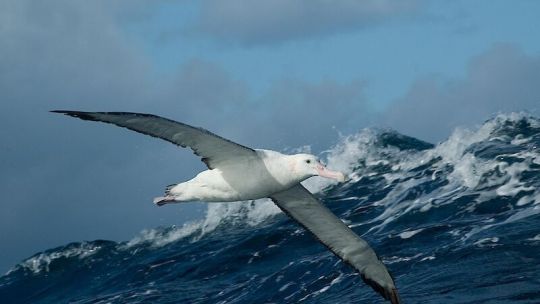
Wandering Albatross (Diomedea exulans)
Now that's a sea bird! Another popular choice for Elwing, this graceful soaring beauty is essentially the biggest flying bird in the world by wingspan, with a sweeping 11 feet/3.5 meters. The older they are, the whiter they become, with only bit of dark plumage on the wing tips and tail. The wandering albatross is the textbook example of a great white bird. Albatross adore storms, and can use strong (storm) wings to carry them over vast distances very quickly. They nest on steep hills, because they need the sweet winds to give them lift to take off. All in all, like the others above, large enough to carry a Silmaril without affecting flight capabilities. Though I really can't imagine Ëarendil cradling an albatross to his bosom, long wings flopping down on both sides of him. (Elros and Elrond are definitely albatross chicks muppets, as per @swanmaids' point).

Black-legged Kittiwake (Rissa tridactyla)
A gull! Yes, of course, but which gull? There are 54 gull species, and so many of them are herring gulls. But for Elwing? Ulmo would transform her into a Black-legged Kittiwake. A graceful, almost dove-like gull, Kittiwakes are bright white with wings topped in silver-grey. They fly like they are playing in the wind, and spend most of their lives at sea. Gorgeous sea bird. Ëarendil would hug. Am I biased because I love them? Maybe.

Ross's Gull (Rhodostethia rosea)
You want a more white and daintier gull? I was going to write about the Ivory Gull (Pagophila eburnea) but if we are going with a rare Arctic species, there are many good things about the Ross's Gull. I mean look at it! White and silver-grey with a rosy blush like it is continuously bathed in sunset, a black collar like Elwing is still wearing the memory of the Nauglamír. I also prefer to go with Ross's gull because every time I have seen an ivory gull in the wild it was slightly blood-stained (they feed off polar bear kills) which has very unfortunate implications in Elwing's case really...

But really, if you want a pure-white dove that actually goes sea for your Elwing imagery, go with ivory gull instead!
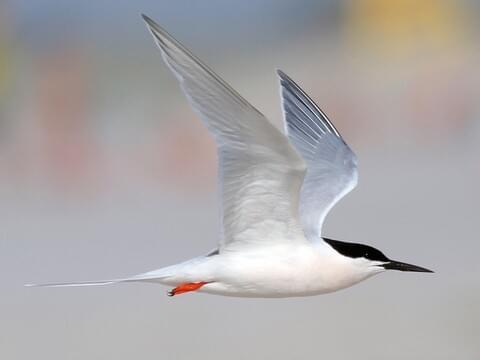
Roseate Tern (Sterna dougallii)
Terns are gorgeous sea birds with impressive flight capacity, and pack an absolutely ridiculous amount of fight and spite in 100 g. I have a scar on the top of my head from a tern chasing me off a beach where it was nesting. That beak sure pinches. Roseate Tern are particularly pretty, and if you subscribed to raven-haired Elwing, that cap is an excellent match. The adults also gain a pink sunset stain on their underparts, so you get that poetic match again. Terns would absolutely yell at Manwë, and probably have.
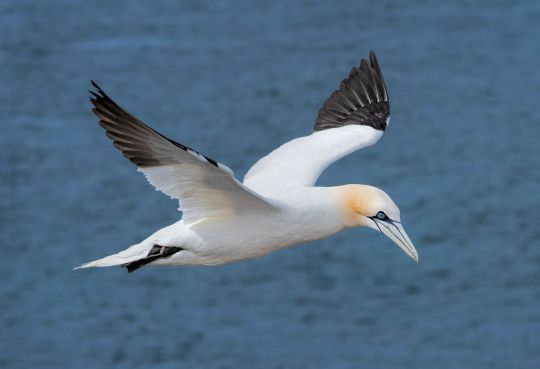
Northern Gannet (Morus bassanus)
Now if you think Elwing was pale-haired and blue-eyed, a Northern Gannet would be more for you. Northern Gannets are sea birds of great size, swift and fearless. They quite literally launch themselves into the sea. They are powerful enough fliers to evoke thoughts of storm-wings and clouds under moon. Gannets also follow boats, which works nicely with the imagery of bird-Elwing meeting Vingilot.

White-tailed Tropicbird (Phaethon lepturus)
Look at this beautiful thing, is she not fitting of a daughter of Dior, of Lúthien's line? I hope I see one for real one day. These long-tailed sea birds are excellent, graceful in flight, easy to see at a distance due to their tail. More active in the morning and in the evening, more to catch the morning and evening star. White-tailed Tropicbirds also come in a spectacular 'golden' variety. Absolutely fitting for someone named Star-Spray.
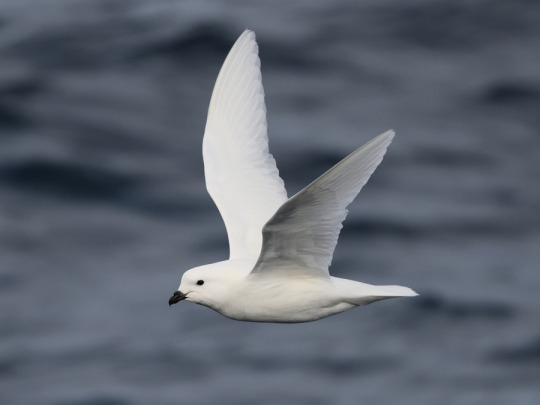
Snow Petrel (Pagodroma nivea)
When I first read the Silmarillion years ago, and I read "... as a white cloud exceeding swift beneath the moon, as a star over the sea moving in strange course, a pale flame on wings of storm" I immediately imagined a glowing white creature that I eventually witness in real life: the gloriously beautiful snow petrel. And while Elwing might not endure the cold and pathless void like a snow petrel would around Antarctica, I think she would revel in the shining feathers, the swift, fleet wings, and, as a feature of being a petrel, the tube nose that would allow her to smell and find Ëarendil anywhere at sea or in the sky. They soar with such joy. Perfect hold-to-your-bosom sized. Snow petrels are one of my favourite sea birds, and you should know more about them!
Like how they have the most hilarious defence mechanism:

...
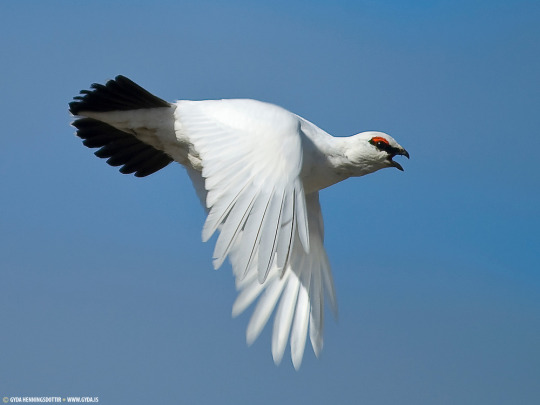
Rock Ptarmigan (Lagopus muta)
No absolutely not.
#honorable mention to snow goose northern fulmar white-bellied sea eagle and masked booby#dishonourable mention to all crane and heron species because it really doesn't make sense in so many ways to have Elwing become one#anyway this brought to you by my love of sea birds and my various bird guides strewn around me#gullcries#silmarillion#tolkien#ocean posting#elwing#earendil#silm meta#sea birds#really leaning into my handle here
243 notes
·
View notes
Note
Bird headcanons for if lifestealers were birds!
(long list but i did try and decide a bird for at least most of them! i may be back with more [to complete the list]; i would provide images, but alas, the restrictions of being on anon. visual vibe checks for the most part but also some of these are because i thought it was funny / coincided with Lore)
Parrot: Pyrrhura picta (painted conure/parakeet) Spoke: Lamprotornis hildebrandti (hildebrandt's starling) Ash: Casuarius bennetti (mountain cassowary) 4c: Cyanocitta stelleri (steller's jay) Clown: Gypaetus barbatus (bearded vulture) / alt: Hamirostra melanosternon (black-breasted buzzard) Branzy: Chelictinia riocourii (scissor-tailed kite) Bacon: Dromococcyx phasianellus (pheasant cuckoo) Jumper: Tauraco fischeri (fischer's turaco) Subz: Ispidina picta (african pygmy kingfisher) Vitalasy: Cariama cristata (red-legged seriema) Cube: Coracias caudatus (lilac-breasted roller) / alt: Chloebia gouldiae (gouldian finch) Roshambo: Nipponia nippon (crested ibis / toki) Planet: Urocolius macrourus (blue-naped mousebird) Jaron: Steatornis caripensis (oilbird / guácharo) Mapicc: Opisthocomus hoazin (hoatzin) / alt: Lanius schach (roufous-backed shrike) Leo: Promerops cafer (cape sugarbird) / alt: Bubo bubo (eurasian eagle-owl) Spep: Harpactes erythrocephalus (red-headed trogon) Zam: Terpsiphone paradisi (indian paradise flycatcher) / alt: Corvus frugilegus (rook) Redd: Leistes superciliaris (white-browed meadowlark) Woogie: Diomedea exulans (wandering albatross) Vortex: Bombycilla garrulus (bohemian waxwing) / alt: Irena cyanogastra (philippine fairy-bluebird)
.
32 notes
·
View notes
Text
"Bird Love"
2020

Wandering Albatross (Diomedea exulans)
#wandering albatross#albatross#procellariiformes#birds#animals#animal art#wildlife#wildlife art#photoshop#cel shaded#art#artists on tumblr#mexican artist#autistic artist#dartxo
4 notes
·
View notes
Text
Wandering albatross (Diomedea exulans)

Albatross chick By: Lancelot Tickell From: The Fascinating Secrets of Oceans & Islands 1972
#ID#Fledgling#Procellariiformes#Diomedeidae#Albatross#Wandering albatross#As someone in the notes pointed out; this chick could very well still be alive!#Wandering albatrosses are known to survive for over 50 years; the oldest known specimen is in her seventies
1K notes
·
View notes
Text
What Does the Albatross Symbolize?

The albatross, a majestic seabird known for its incredible wingspan and long migrations across the world's oceans, has long captured human imagination. In literature, mythology, and folklore, the albatross holds deep symbolic meaning, often tied to notions of freedom, endurance, and even guilt. This article explores the various symbolic interpretations of the albatross across different cultures, as well as its place in art, literature, and nature.
The Albatross – A Bird of the Sea
The albatross belongs to the family Diomedeidae, with over 20 species known for their ability to fly vast distances without needing to rest frequently. The albatross is often associated with the vast oceans and the lonely, uncharted waters they traverse. These birds, especially the wandering albatross (Diomedea exulans), have the largest wingspan of any living bird, capable of spanning up to 12 feet (3.6 meters), which gives them an almost mystical quality.
But what does this extraordinary bird symbolize? How does it appear in myths, literature, and across various cultures?
1. Freedom and Vastness
One of the most common symbolic meanings of the albatross is freedom. The albatross is often associated with the open ocean, where it spends much of its life flying without boundaries. Its ability to glide for hours or even days without needing to rest represents the ultimate form of freedom—the freedom to roam, unconfined by the constraints of the land.
The Albatross and Its Endless Journey
Albatrosses migrate thousands of miles across the oceans, often spending years without touching land. Their flight over vast expanses of water speaks to the limitless possibilities and unrestricted movement. For this reason, the albatross is sometimes viewed as a symbol of adventurers, those who seek to break free from the normal and conventional and explore the unknown.
This sense of freedom is not just physical but also metaphorical. The albatross can symbolize liberation from the burdens of everyday life, encouraging individuals to break free from societal constraints and explore their true potential.
2. Endurance and Perseverance
The albatross's long migrations across the oceans also make it a symbol of endurance, perseverance, and resilience. Despite facing harsh conditions, such as storms, strong winds, and vast stretches of open sea, the albatross continues its journey without hesitation or faltering.
In many cultures, the albatross is seen as a representation of strength in adversity, urging people to persevere in difficult times. Its long flights and ability to maintain stamina across vast distances can inspire those facing challenges to keep going, no matter how difficult the journey may seem.
Albatross as a Symbol of Long-Term Commitment
In some interpretations, the albatross symbolizes long-term commitment and dedication. These birds return to the same nesting sites year after year, forming long-lasting bonds with their mates. Their unwavering dedication to their journey, and their lifelong connection with their partners, resonates with ideas of loyalty, steadfastness, and commitment.
3. Guilt and Burden
In contrast to its positive symbolism of freedom and endurance, the albatross also carries a darker, more burdensome meaning in certain literary and cultural contexts. Perhaps the most famous representation of the albatross's burden is in Samuel Taylor Coleridge’s 1798 poem, "The Rime of the Ancient Mariner."
"The Rime of the Ancient Mariner"
In Coleridge’s poem, the albatross is initially a symbol of good omen for the mariner and his crew. However, when the mariner inexplicably shoots the bird, he is cursed, and the killing of the albatross brings great misfortune to the entire crew. The mariner is forced to wear the dead bird around his neck as a symbol of his guilt, creating a heavy burden he must carry until he atones for his actions.
The image of the albatross hanging around the neck of the mariner has become a widely recognized metaphor for guilt and the consequences of thoughtless actions. In this sense, the albatross represents a psychological burden, reminding people that their actions can have long-lasting consequences that must be faced.
Albatross as a Burden in Modern Culture
In modern culture, the phrase "an albatross around one’s neck" has come to symbolize a heavy burden, a guilt that one cannot escape, or a problem that is difficult to get rid of. It’s used metaphorically in various contexts, whether referring to personal mistakes, financial debt, or the weight of responsibility.
4. Spirituality and Mysticism
The albatross has been viewed as a spiritual or even mythical bird in various cultures. In some traditions, its appearance is considered a sign of spiritual guidance or a connection to the divine.
Albatross as a Messenger
In some Native American cultures, the albatross is believed to be a messenger of spiritual wisdom. Its flight across the open sea represents a connection between the earthly and spiritual realms, with the bird acting as a guide for those seeking enlightenment or spiritual growth.
The Albatross in Other Cultures
In other parts of the world, the albatross is associated with good fortune and blessings. In Polynesian culture, the bird is sometimes considered a sacred symbol, revered for its strength and its ability to traverse the vastness of the ocean. In these traditions, the albatross is often linked to prosperity, protection, and a successful journey.
5. The Albatross in Literature and Art
Beyond Coleridge's famous poem, the albatross has appeared in numerous literary works and visual art, symbolizing everything from existential dilemmas to profound wisdom.
The Albatross in Modern Literature
In modern literature, the albatross often retains its dual symbolism of freedom and guilt. It continues to appear in works that explore themes of existential meaning, human consequences, and the pursuit of personal freedom. Whether a character seeks to emulate the bird’s freedom or grapples with the weight of their own actions, the albatross remains a powerful symbol.
The Albatross in Art
In the realm of art, the albatross has also inspired painters, photographers, and sculptors. It is often depicted in its most majestic form, soaring above the tumultuous waves, capturing both the vastness of the ocean and the bird’s ability to navigate it. These artistic representations highlight the bird’s inherent connection to nature, its symbolic link to freedom, and its spiritual significance.
6. Albatross as a Symbol of Environmental Awareness
In recent years, the albatross has gained a new significance in the context of environmentalism. As a bird that spends most of its life at sea, the albatross is highly vulnerable to the effects of pollution, climate change, and overfishing.
Albatross and Climate Change
The albatross's long migratory routes are threatened by shifting climate patterns, which affect the availability of food and breeding grounds. In this context, the albatross symbolizes the fragile balance of nature and the need for environmental conservation. Efforts to protect the albatross and other seabirds are now intertwined with broader movements to safeguard the oceans and the ecosystems that sustain life on Earth.
Albatross and Marine Conservation
The albatross is also used in campaigns that focus on reducing plastic waste in the oceans. In some disturbing reports, albatrosses have been found to ingest plastic debris, which can cause harm to their digestive systems. The image of the albatross with plastic waste or other pollutants in its stomach serves as a potent reminder of the urgent need to protect the oceans.
Conclusion: The Multifaceted Symbolism of the Albatross
The albatross is a bird that encompasses a wide range of symbolic meanings. From its representation of freedom, endurance, and perseverance to its association with guilt and burden, the albatross captures both the beauty and the complexity of the natural world. It serves as a powerful symbol in literature, art, and culture, reminding us of our connection to the earth and the consequences of our actions.
Whether revered as a guide to the divine, seen as a burden to carry, or admired for its unmatched freedom, the albatross continues to be a rich symbol across cultures. In today’s world, as we face environmental challenges, the albatross also stands as a reminder of the fragility of nature and the urgent need to protect our oceans and the creatures that inhabit them.
Ultimately, the albatross represents more than just a bird—it is a living symbol of the complexities of human existence, reminding us of the balance between freedom and responsibility, beauty and burden, and life and legacy.
1 note
·
View note
Text
Aurora the Albatross Introduction
Our blog features Aurora and Ace, a mated pair of wandering albatrosses (Diomedea exulans), during their lifetime of breeding, foraging, and migrating.
Albatrosses are large, primarily white birds with black-grey wings and hooked bills. They have wingspans of around 138 inches, and they weigh around 13-28 pounds. This albatross species, similarly to the other 22 albatross species, eat cephalopods, crustaceans, and fish. They fly up to 25 miles per hour, and spend most of their lives at sea.
Their conservation status is vulnerable, as climate change, fisheries, plastic consumption, and changing winds threaten their survival. Companies and individuals can both take measured steps to conserve them.

Image Credit: Canva Original.
0 notes
Text
Invasive mice are devouring albatrosses alive on a remote island in the Indian Ocean, so conservationists have come up with an explosive solution — "bombing" the mice.
Mice have been wreaking havoc on Marion Island, between South Africa and Antarctica, for decades. Humans accidentally introduced the mice in the 19th century, and the rodents have since developed a taste for wandering albatrosses (Diomedea exulans) and other threatened seabirds.
The Mouse-Free Marion Project, a collaboration between the South African government and BirdLife South Africa, is trying to raise $29 million to drop 660 tons (600 metric tons) of rodenticide-laced pellets onto the island in winter 2027, AFP news agency reported on Saturday (Aug. 24).
The project plans to send a squad of helicopters to drop the pellets. By striking in winter when the mice are most hungry, the conservationists hope to eradicate the entire mouse population of up to 1 million individuals.
1 note
·
View note
Text
Wandering Albatross (Diomedea exulans)

Meet the Wandering Albatross, a remarkable seabird that roams the southern oceans with its impressive wingspan ranging from 251 to 350 cm (8.23–11.5 ft)! Weighing between 6.25–11.3 kg (13.8–25 lb), these incredible creatures can live up to about 23 years and are classified as "Vulnerable" in terms of protection status. Their diet consists of cephalopods [squids, octopi, etc.], small fish, and crustaceans, and they are known to cover a range from 28° to 60° in the southern oceans.
But here's the most intriguing part - these albatrosses are masters of the sky, spending most of their time airborne and only touching the ground to breed! With a wingspan of 3.7 m, the longest-winged recorded Albatross showcases the incredible capabilities of this species. Known for their ability to remain in the air for hours without flapping their wings, they can gracefully soar across the open ocean for vast distances, making them a true marvel of the avian world.
Sailors consider the albatross a sign of good luck, and there's even a belief that when a sailor passes away, the bird carries the soul of the departed. So, if you ever have to opportunity catch a glimpse of these majestic creatures, remember their extraordinary flying prowess and the captivating folklore that surrounds them!
#creaturefeature#wildlife#biodiversity#naturewisdom#naturalbeauty#text post#animalia#fauna#little bird#DiomedeaExulans#wandering albatross#sailor lore
0 notes
Link
Albatrosses are threatened with extinction – and climate change could put their nesting sites at risk-The wandering albatross (Diomedea exulans) is the world’s largest flying bird, with a wingspan reaching an incredible 3.5 metres. These birds are oceanic nomads: they spend most of their 60 years of life at sea and only come to land to breed approximately...
0 notes
Text
BOTD: Wandering Albatross
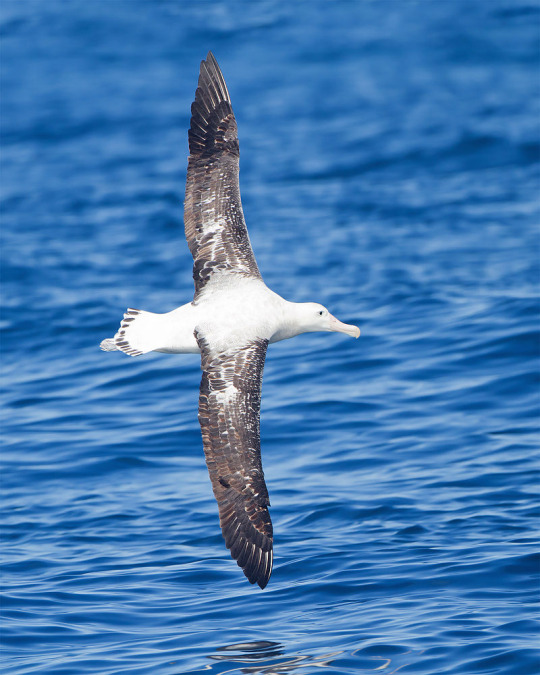
^Image: By JJ Harrison (https://www.jjharrison.com.au/) - Own work, CC BY-SA 3.0, https://commons.wikimedia.org/w/index.php?curid=18290990
Wandering Albatross (Diomedea exulans)
The Wandering Albatross has the largest wingspan of all living birds, averaging 3.1 meters and reaching up to 3.5 meters - larger wingspans have been reported but not verified. As they age, their plumage becomes whiter, with juveniles being a chocolatey-brown colour. Sometimes, they eat so much that they are unable to fly and have to rest on top of the water.
#bird of the day#birdoftheday#botd#bird facts#bird fact#bird record holders#albatross#wandering albatross#diomedea exulans#sea birds#seabirds#seabird#bird#birdfactoftheday#ornithology#birdwatching#tropical birds
30 notes
·
View notes
Photo
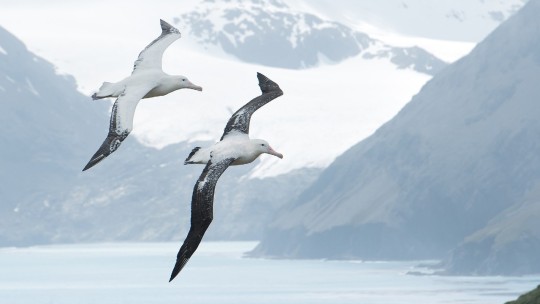
WANDERING ALBATROSS (DIOMEDEA EXULANS)
A pair of albatross flying over snowy mountains in South Georgia Island, Antarctica.
(Image credit: Getty Images)
#getty images#photographer#albatross#snow#mountains#south georgia island#antarctica#bird photography#nature#diomedea exulans
15 notes
·
View notes
Photo

great albatrosses are big
img: direct link unavailable
source
#great albatross#albatross#animal#taaf#scientist#nature#people#diomedea exulans#big#unit#scale#terres australes et antarctiques françaises#upload
329 notes
·
View notes
Note
Wandering albatross (Diomedea exulans)

if doodle requests are still open… a Joe Hills for the soul?

tumblr sexyman
274 notes
·
View notes
Photo

Diomedea exulans by andyaj58 AJ
#bird#birds#animal#animals#biology#nature#wildlife#fauna#Procellariiformes#Diomedeidae#Diomedea#Diomedea exulans
27 notes
·
View notes